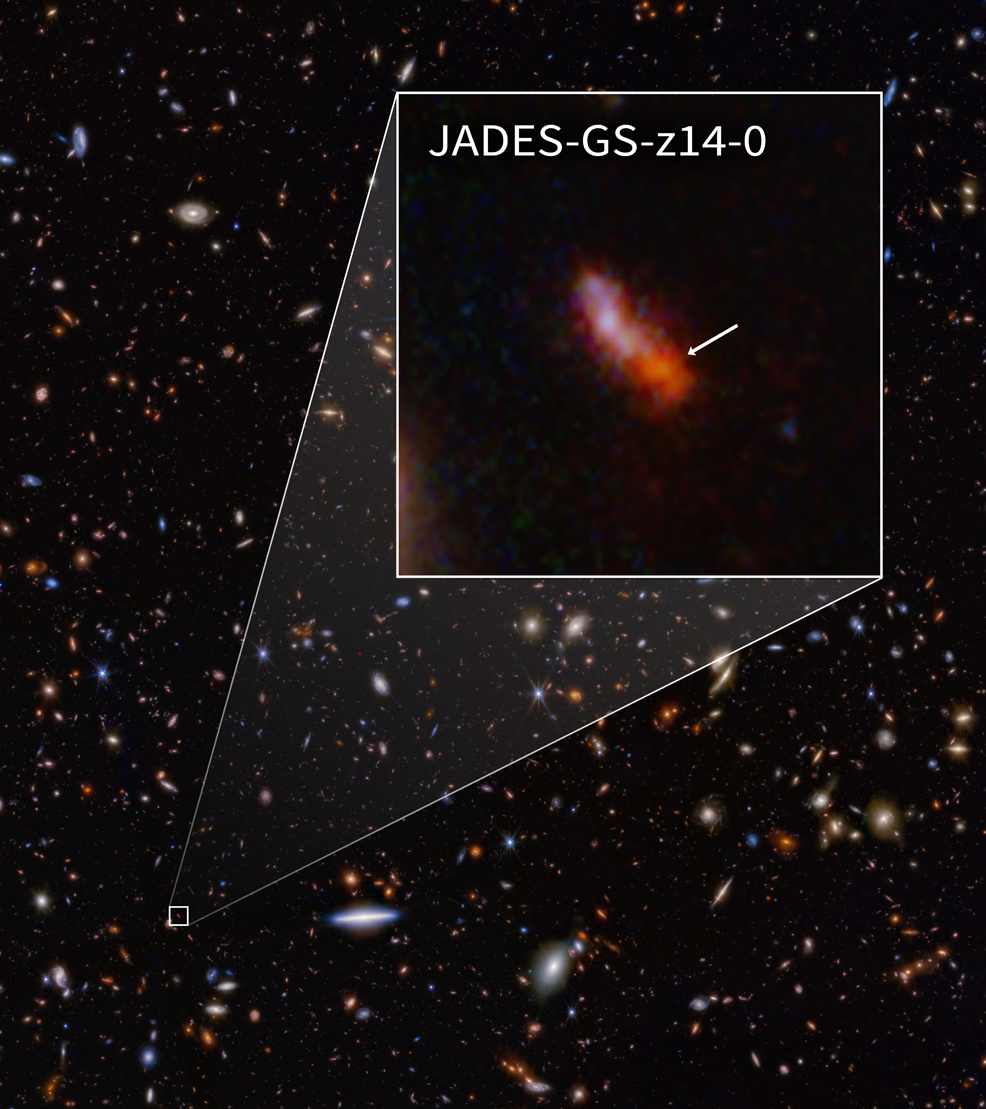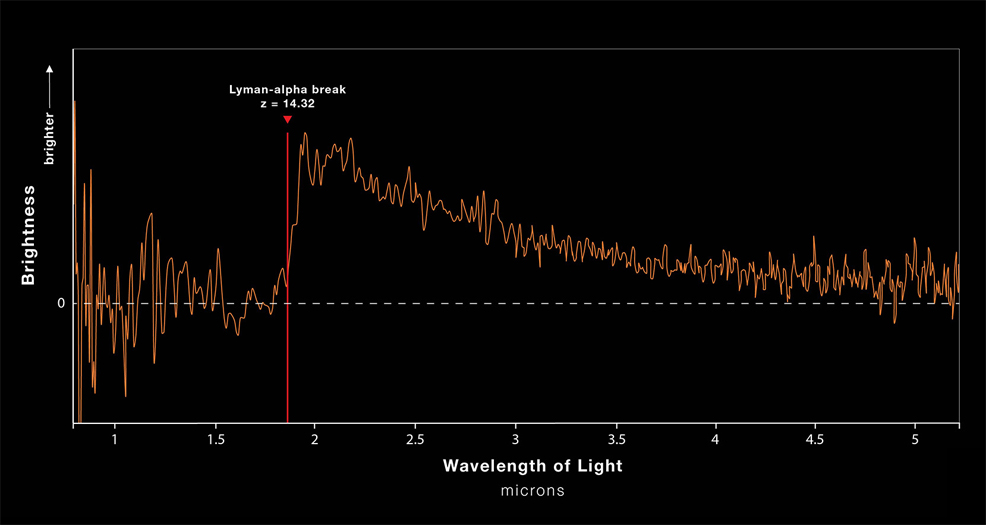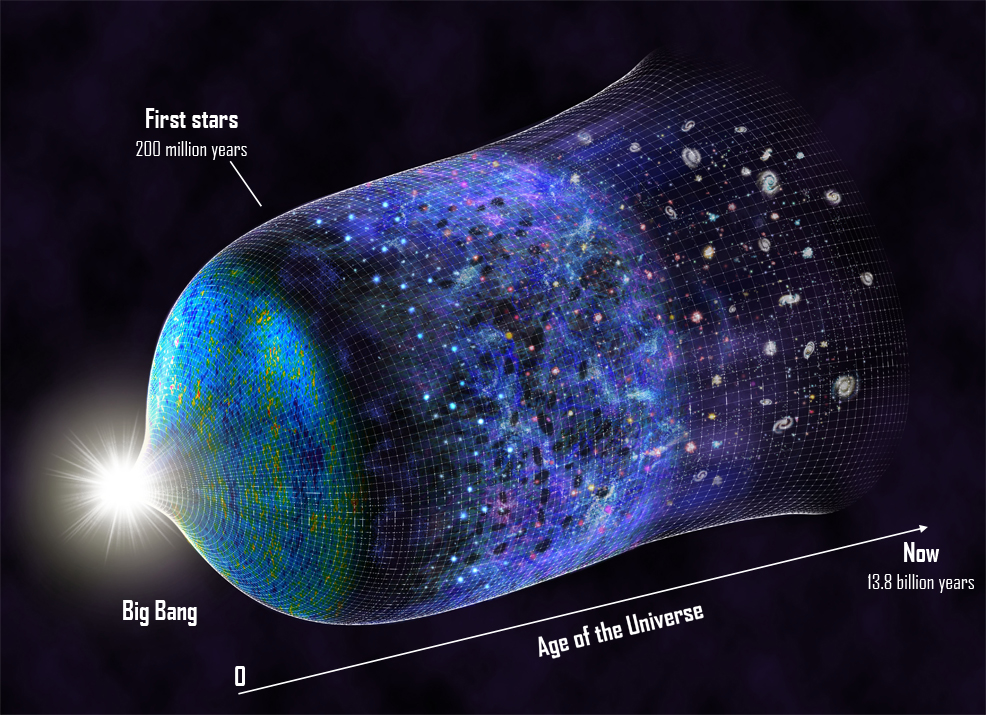
1st June 2024 Most distant galaxy ever observed NASA reports that the Webb Telescope has discovered JADES-GS-z14-0, the most distant known galaxy, which existed only 290 million years after the Big Bang. Its redshift of 14.3 shatters the previous record of 13.2.
Since beginning science operations in July 2022, the James Webb Space Telescope (JWST) has been transforming our view of the cosmos. We have seen breathtaking images of nebulae, tantalising details of exoplanets, the slow-motion dance of interacting galaxies, and even asteroids in other star systems. Now, astronomers report one of its most significant discoveries to date: the most distant galaxy ever observed, captured as it appeared when the universe had only existed for 290 million years, or 2.1% of its current age. A team used the Near-Infrared Spectrograph (NIRSpec), a powerful instrument that allows Webb to simultaneously measure the near-infrared spectrum of up to 100 objects at high resolution. Their observations formed part of the JWST Advanced Deep Extragalactic Survey (JADES). This program seeks to understand the reionisation era, the period when the universe began to light up again as the first stars and galaxies emerged. They observed one such galaxy, known as JADES-GS-z14-0, for almost ten hours. After processing its spectrum and looking for a critical wavelength called the Lyman-alpha break, the astronomers calculated its redshift to be 14.32.
Redshift is a phenomenon that occurs when light from an object in space is stretched to longer, redder wavelengths as it moves away from us. This stretching of light is similar to the way the sound of a siren lowers in pitch as an ambulance drives away. In the context of galaxies, a higher redshift means the galaxy is farther away and we are seeing it as it appeared further back in time. The redshift of 14.32 for JADES-GS-z14-0 has shattered the previous record of 13.2, set by a similarly-named galaxy called JADES-GS-z13-0. While the latter can be dated back to 320 million years after the Big Bang, the new record holder is even more ancient. NASA confirms it existed just 290 million years after the creation of our universe. The light from JADES-GS-z14-0 has taken 13.6 billion years to reach us. However, since we are viewing the galaxy as it appeared in the past, its actual distance is now much greater, due to the expansion of the universe that has occurred since then. The so-called "present proper distance" is 33.4 billion light-years.
While our own galaxy, the Milky Way, is 87,000 light-years across, galaxies in the early universe typically had much smaller sizes and masses, as they had yet to evolve and merge into larger structures. The data obtained from JADES-GS-z14-0 revealed some surprises. In their news release, NASA researchers Stefano Carniani (Normal School of Pisa, Italy) and Kevin Hainline (University of Arizona, USA) explain the significance of their discovery and how it could improve our understanding of the early universe. "When the spectrum was first processed, there was unambiguous evidence that the galaxy was indeed at a redshift of 14.32, shattering the previous most-distant galaxy record," the scientists explain. "Seeing this spectrum was incredibly exciting for the whole team, given the mystery surrounding the source. This discovery was not just a new distance record for our team; the most important aspect of JADES-GS-z14-0 was that at this distance, we know that this galaxy must be intrinsically very luminous. "From the images, the source is found to be over 1,600 light-years across, proving that the light we see is coming mostly from young stars and not from emission near a growing supermassive black hole. This much starlight implies that the galaxy is several hundreds of millions of times the mass of the Sun! This raises the question: How can nature make such a bright, massive, and large galaxy in less than 300 million years? "The data reveal other important aspects of this galaxy, indicating bright emission lines from hydrogen and oxygen. The presence of oxygen so early in the life of this galaxy is a surprise and suggests that multiple generations of very massive stars had already lived their lives before we observed the galaxy. "All of our observations, together, tell us that JADES-GS-z14-0 is not like the types of galaxies that have been predicted by theoretical models and computer simulations to exist in the very early universe. Given the observed brightness, we can forecast how it might grow over cosmic time, and so far, we have not found any suitable analogues from the hundreds of other galaxies observed at high redshift in our survey. Given the relatively small region of the sky that we searched, its discovery has profound implications for the predicted number of bright galaxies we see in the early universe. It is likely that astronomers will find many such luminous galaxies, possibly at even earlier times, over the next decade with Webb. We're thrilled to see the extraordinary diversity of galaxies that existed at Cosmic Dawn!" Brant Robertson, Professor of Astronomy and Astrophysics at the University of California-Santa Cruz, is the lead author of a paper on the team's discovery, accepted for publication in The Astrophysical Journal. "We could have detected this galaxy even if it were 10 times fainter, which means that we could see other examples yet earlier in the Universe – probably into the first 200 million years," he said. "The early Universe has so much more to offer."
Comments »
If you enjoyed this article, please consider sharing it:
|
||||||









